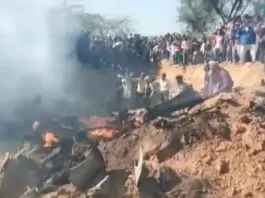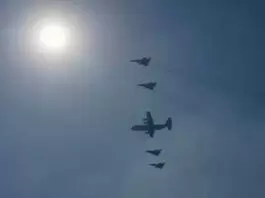India is preparing to launch a massive indigenous acquisition project for 354 light tanks, a critical operational requirement that has emerged during the ongoing 30-month conflict in eastern Ladakh with China.
According to sources, the defence ministry has settled long-standing disputes between the Army and the DRDO over light tanks designed for high-altitude warfare in Ladakh and Arunachal Pradesh, as well as riverine areas such as the Rann of Kutch and that can be quickly deployed after being transported by air.
According to a source, the Rajnath Singh-led Defence Acquisitions Council will soon consider granting AoN (acceptance of necessity) for the armoured fighting vehicle-Indian light tank (AFV-ILT) under Project ‘Zorawar’ at a cost of around Rs 17,500 crore.
The proposal is to reserve 59 of the 354 light tanks, each weighing less than 25 tonnes and offering a high power-to-weight ratio as well as superior firepower and protection.
The remaining 295 tanks will be built under a government-funded design and development project for Indian industry under the Defence Acquisition Procedure’s ‘Make-1’ category (DAP). According to a source, “DRDO can compete with private players for this.”
The Army had made a compelling case for the private sector to manufacture all 354 tanks in the Make-1 category.
“DRDO claims that its first light tank prototype will be ready by mid-2023. As a result, the decision has been made to reserve 59 tanks for DRDO, on the condition that it delivers a successful prototype ahead of the others in the fray,” the source added.
After the conflict erupted in 2020, the 12-lakh-strong Army was able to deploy some of its heavier Russian-origin T-90S and T-72 main battle tanks (40 to 50 tonnes each) in eastern Ladakh. In addition, the PLA received many technologically advanced medium and light tanks, including the new third-generation Type-15 tanks.
However, the T-90S and T-72, which were designed for use in plains and deserts, have limitations in high-altitude areas ranging from 11,000 to nearly 17,000 feet. As a result, there is a greater need for indigenous versatile light tanks that are more manoeuvrable and operationally flexible in mountains, according to another source.
The ongoing Russia-Ukraine war has also had an impact on the Army’s fleet of 1,200 T-90S tanks (another 457 are being manufactured under licence from Russia) and 2,400 older T-72 tanks.
The Army wants the new light tanks to include niche technologies such as artificial intelligence, drone integration, an active protection system and a high level of situational awareness among others.






